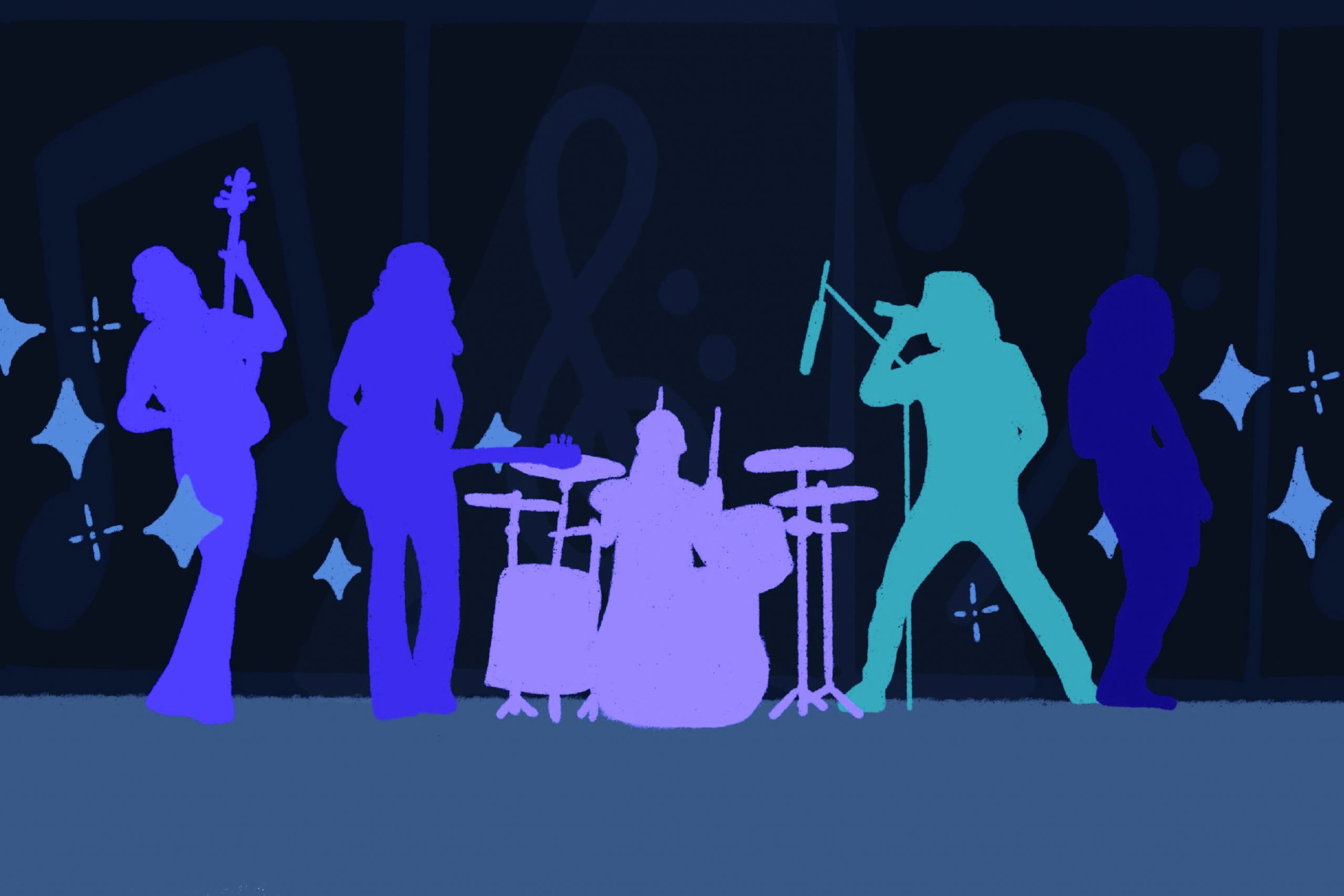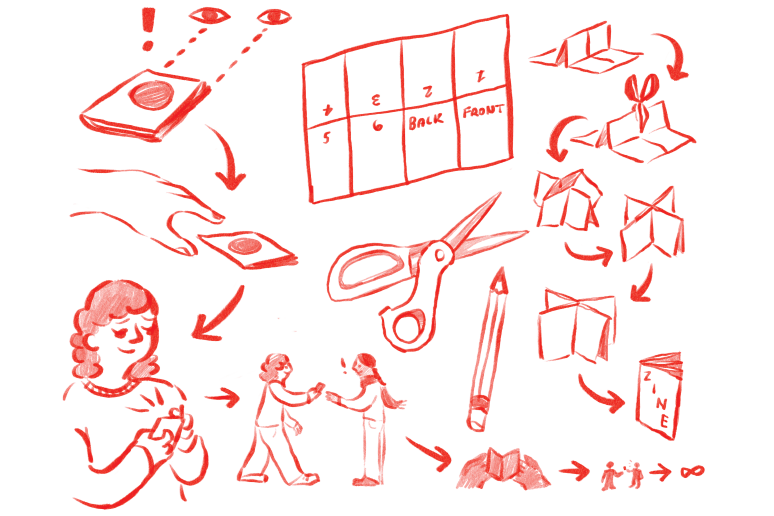Missing from Melodies: Exclusion in the Tufts Music Scene
Editor’s Note: Liani Astacio is currently a member of Melisma and WMFO.
After a year and a half of radio silence from Tufts’ live music scene, bands ranging from indie to jazz to pop emerged on campus at the start of the 2021 academic year. This re-emergence of live music coincided with the loosening of COVID restrictions last fall, allowing for both student bands and bands outside the Tufts community to perform on campus.
Some of Tufts’ well-known music clubs have had a presence on campus for decades. WMFO has been the campus radio station since its start in 1956 when it was an AM broadcast known as WTCR, or Tufts Community Radio. By 1969, WMFO eventually became an FM freeform broadcast after receiving a hefty grant from Tufts University. Applejam, a club that hosts live music events, has been a campus fixture since as early as 2003 and once even hosted a pre-Be the Cowboy Mitski.
Live music culture isn’t new at Tufts; in fact, Tufts has produced a number of highly successful artists, including multi-Grammy award winner Tracy Chapman, who graduated from Tufts in 1987. She was discovered by a Tufts parent and music producer Charles Koppelman while still a student at the university. More recently, Tufts has produced bands such as the indie-alternative band Crumb, which has amassed almost 2 million monthly Spotify listeners. Band culture has continued to be a part of Tufts’ student culture.
However, many students are just recently getting their first taste of the live Tufts music scene and culture. Junior Amelia Oliver started a new WMFO show called Post-Adolescence Glow in October, dedicated to playing live music from Tufts bands and musicians. She said, “I started Post-Adolescence Glow [when I was] missing music [due to COVID] and hoping to bring it back into my life in a totally new way.” She added, “It is so exciting being around live music every week and seeing the amazing musical and creative connections within these groups.”
Junior Joanet Plascencia spoke on her experiences engaging with the different music clubs at Tufts and her efforts in starting a band. Her band practices in Tufts’ studio spaces and takes advantage of the equipment available. She said, “There’s so many great resources here, and I really appreciate it because I feel like I have resources as well as a supportive community of friends and other music enjoyers.” She noted that in her first year at Tufts she was not aware of many music clubs at Tufts, but said, “It’s become more open and welcoming, and more people are learning about these clubs, learning about these shows.”
While Plascencia expressed excitement and enthusiasm for live music at Tufts, she also described concerns about the lack of diversity within many of these spaces. She cited the amount of physical space white students take up as a barrier to her enjoying some shows on campus. Her least favorite thing about the live music scene is “how white the spaces are and how entitled people can be in these crowds.” Plascencia said, “I’d like to see appreciation for music genres that were created by people of color.” Many significant genres including rap, jazz, blues, reggaeton, funk, bachata, cumbia, and samba were created by Black and Indigenous communities, but have not always received respect from white Western culture. She explained that, while it’s impossible to escape how white a predominantly white institution like Tufts is, she hopes more people of color can feel safe in music spaces at Tufts. She said the reality of a lack of diversity in these spaces “can be a turnoff and make [students of color] feel unsafe or not valid.”
Plascencia expressed hope for more inclusive music spaces on campus. She discussed how a lot of the dance groups have a strong aspect of musicality, especially the step teams such as ENVY, challenging what is considered music. She said, “I really do appreciate some of the events that cater to just Black heritage and art. Even if it’s just the dance groups.” She described how she hopes her upcoming band, which is composed entirely of people of color, will help continue to make space for other students of color in the independent music scene.
Ian Smith, Editor-in-Chief of Tufts’ music journal Melisma and member of Applejam and WMFO, also commented on the lack of diversity within the music scene at Tufts. They said, “[Applejam] is a pretty white club, and then the people who are also going to the shows I would say are majority white.” They also commented that a majority of the bands that perform at the shows are predominantly cis white men.
Smith discussed how important it is to try to make music spaces at Tufts more inclusive, despite its current state. They said, “What I want to try and improve on in [Melisma] is uplifting more people of color and women with the articles that we write because the indie music scene as a whole is pretty white, although there have been efforts in the past 5 to 10 years to change that.” They added how important it is that Melisma makes more of an effort to cover artists that are not under the label “indie,” and delve into genres with roots in the Black and Latinx diaspora such as reggaeton and genres dominated by women, such as pop.
Historically, indie rock and do-it-yourself cultures have disassociated themselves from popular culture even though the genres are also framed within the values and ideals of white Western culture. The DIY music culture, which prides itself on musicians using resources available to them, still has had problems with inclusivity and accessibility. Independent artists of color, especially those who make art drawing from their identities, still have not received the same amount of success or critical acclaim as many white artists, despite many white indie musicians taking influence from Black and brown artists, as well as the fact that Black musicians invented rock music.
Other students are also brainstorming ways to make a more inclusive and diverse music scene that breaks away from the white indie norm. Anevay Ybáñez, Amalia Hirschorn-Martinez, and Ruby Goodman have been working on a project based on National Public Radio’s Tiny Desk concerts called Earworms, in which they hope to spotlight musicians that have not had the opportunity to take up a lot of space within the current channels at Tufts. They have also reiterated the idea that the Tufts music scene has not been inclusive of all genres and want to create space for more variety. Ybáñez said, “We want genre variety and music in different languages, something that’s not just shoegaze.” Shoegaze is a predominantly white-dominated genre under the indie umbrella that Ybáñez attributed as being the most common genre played in the Tufts music scene.
Hirschorn-Martinez also mentioned how the label of indie and “cool music” can be incredibly limiting and creates a feedback loop of what type of music is accepted in performance spaces and what is not. She said, “What type of music is deemed indie? What sounds and what instruments? What vocal patterns? What quote unquote is cool.” Ultimately, according to Hirschorn-Martinez and Ybañez, creating spaces that move beyond the limiting label of indie music would help create a more inclusive live music scene.
Ybáñez added that many of the live music clubs are larger extensions of friend groups, and with a socially-segregated school like Tufts, these spaces are always going to be dominated by the same people and be predominantly white. She described conversations she had with other students, especially musicians, who feel like performance spaces are impenetrable to those who are not already part of the predominantly white in-group. “[The people who get to perform] often know someone or look a certain way, dress a certain way, and/or listen to certain artists,” she said.
Ybáñez also described the importance of working on making the music scene more inclusive. “It’s one thing to recognize [the exclusivity]. It’s another thing to do something and act on it. And I think that there’s just so much talent here that goes unheard,” she said. “I think [working on promoting inclusivity] is definitely a collective group effort.”
The current state of the live music and band scene extends upon a larger problem in music, especially within indie or alternative music spaces that take up a lot of space on college campuses. Many Tufts students have recognized how collective action and hard work on multiple levels are necessary in order to change a radically growing live music culture.


